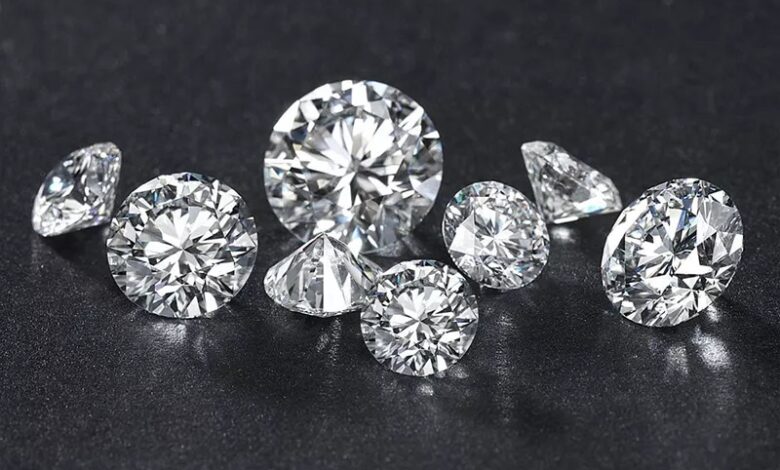No More Intense Pressure: A Novel Approach to Diamond Synthesis

News Mania / Agnibeena Ghosh/ 29th April 2024
Traditionally, diamonds have been synonymous with immense pressure, as they naturally form deep within the Earth’s mantle. However, a groundbreaking laboratory technique has emerged, offering diamonds a path to existence without the need for such intense pressure.
The conventional method for producing synthetic diamonds, known as high-pressure and high-temperature growth (HPHT), entails subjecting carbon to pressures of approximately 5 gigapascals, akin to the conditions found in the upper mantle where natural diamonds originate. This process involves dissolving carbon in liquid metal, leading to diamond formation at temperatures reaching around 1400°C. However, a recent study published in Nature reveals a revolutionary alternative: diamonds can now be cultivated at atmospheric pressure using a solution comprising gallium, iron, nickel, and silicon, exposed to a gas mixture of carbon-rich methane and hydrogen. Notably, this innovative technique operates at lower temperatures, around 1025°C, compared to traditional HPHT methods.
Rodney Ruoff, a physical chemist at the Institute for Basic Science Center for Multidimensional Carbon Materials in Ulsan, South Korea, explains that the inclusion of silicon plays a pivotal role in initiating diamond growth. This catalytic effect prompts the initial nucleation of diamond, enabling the crystal to expand and develop further. Unlike HPHT and another commonly used method called chemical vapor deposition (CVD), which relies on a diamond “seed” to initiate growth, this new technique bypasses the need for such a catalyst.
The implications of this breakthrough extend beyond the realm of luxury jewelry. Diamonds serve as indispensable tools for a myriad of scientific applications, ranging from magnetic field sensing to particle physics research. By simplifying the process of diamond synthesis, this novel method opens doors to a broader range of scientific endeavors. Ruoff emphasizes that the synthesis of diamond-based materials no longer necessitates expensive or intricate equipment, underscoring the accessibility and affordability of this innovative approach.
While chemical vapor deposition and high-pressure and high-temperature growth techniques dominate the jewelry industry, the adoption of this new method remains uncertain in the context of luxury diamonds. Whether this groundbreaking technique will revolutionize the production of diamonds destined for adornment is yet to be seen. However, its potential to democratize diamond synthesis and expand the scope of scientific exploration marks a significant milestone in the field of materials science.






